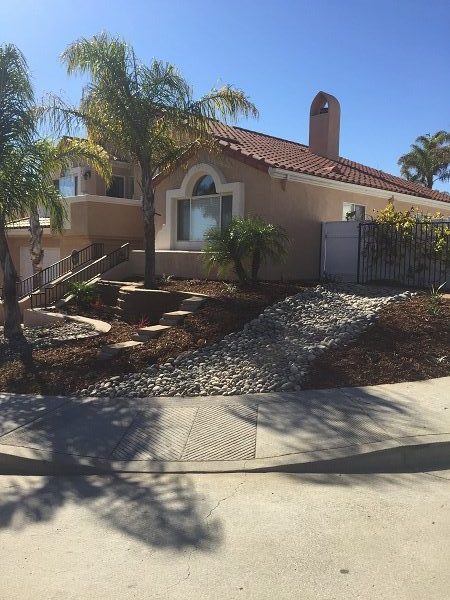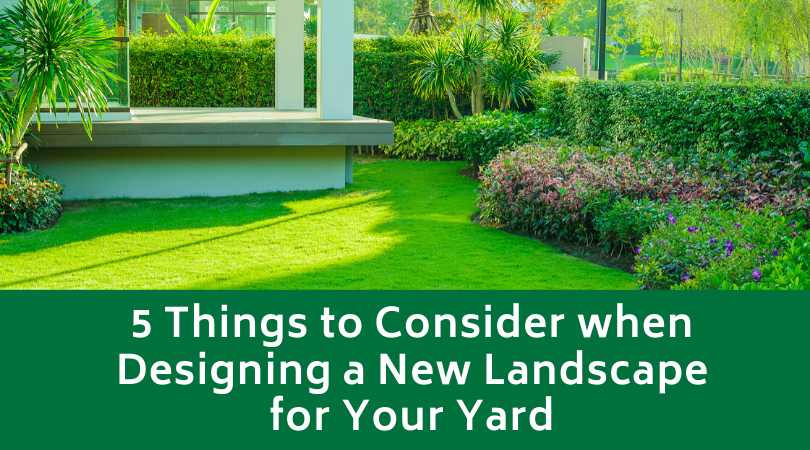Whether you want to make a few changes to your existing landscape or perform a complete overhaul, there are five important factors to consider while you lay out your plan. Many people run straight to their local garden supply store without planning, but creating a plan beforehand will help you create a stunning landscape that thrives. We’ll outline the five most important things to consider when you design a new landscape for your yard below.
1. Think About Your Theme
Having a theme can help you create a seamless landscape that flows from one area to another, and it can help you choose your materials and plants. Your theme can be something as simple as using consistent forms and shapes throughout your design, or they can be as complicated as designing an Oriental or relaxation garden.
An excellent place to start is by taking a look at your home’s architecture. The goal is to create a theme that complements your home’s styles and lines because your yard is an extension of your home. Your theme will help you place your decorations, plants, structures, and hardscapes.
2. Your Yard’s Characteristics
Think about your yard’s topography, regional climate, and soil type when you plan your new landscape. The USDA Plant Hardiness Zone Map is an excellent tool to help here. You also want to look at your yard’s microclimate and consider the shade and sun exposure when you pick your plants. Microclimates will be on the plants you choose, and they’re usually labeled as deep shade, shade, partial shade, or full sun.
3. Maintenance
No matter which type of landscape you design, how difficult your maintenance is will be a big factor. For example, having lots of hardscapes and ornamental flower beds may look pretty, but they can be difficult and time-consuming to maintain. You should leave enough space to fit your lawn equipment around them, and decide if you plan to maintain it on your own or hire someone to do it for you. The more complicated it is, the more you’ll pay someone.

4. Planting Structure
When you pick out your plants and structures, make sure you think about your visual planes. Start from above you and work your way down, remembering to include trees or archways.
Next, look at your vertical space and consider how far apart or close together; you want to place your plants. Decide if you want to stagger or layer plants, and keep the plant’s widths and heights in mind. Most people tuck smaller plants in between and in front of larger plants. Finally, include your hardscapes, groundcovers, and how you’ll group your smaller plants.
5. Keep the Future in Mind
As your landscape grows and matures; it’ll change. When you pick out your plants, take their maintenance needs, growth rate, and the mature size into consideration. Every plant should have enough room to accommodate their mature size, or close to it.
Contact Evergreen Landscaping Today
If you’d like help designing your new landscape, get in touch. Our professional staff is ready to help you design the perfect landscape for your home.

